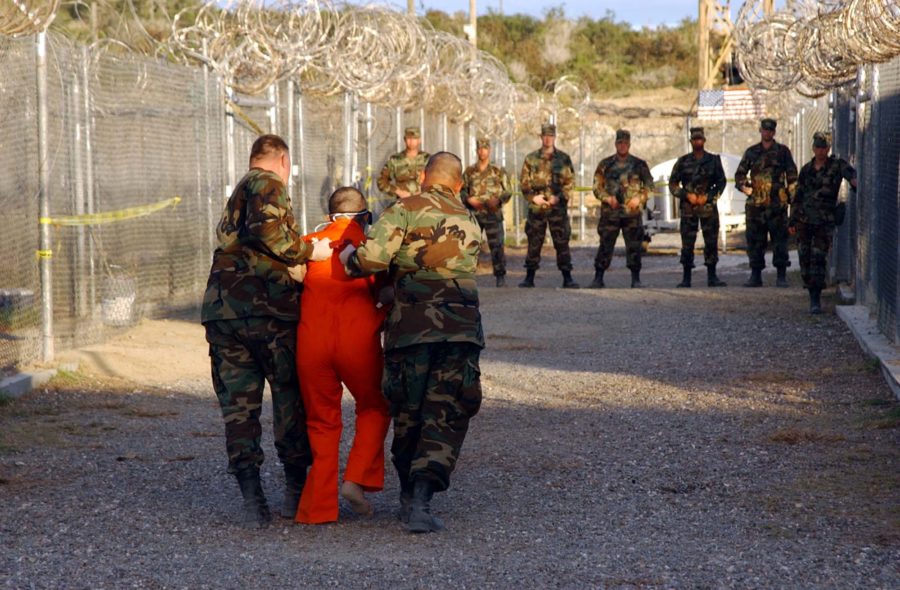Extreme violence within CIA
Taliban and al-Qaida detainees in orange jumpsuits sit in a holding area during in-processing to the temporary detention facility on Jan. 18, 2002, in Guantanamo Bay, Cuba. The Senate Select Committee on Intelligence released a report on the CIA’s interrogation practices. The report said the CIA misled Americans and government policymakers about the effectiveness of the program that was secretly put into place after the 9/11 terror attacks.
January 6, 2015
A new era begins with a defining change. Agriculture, the railroad, and nuclear energy all stand among the developments which inspired a fundamental global change in the way things were. But sometimes things change due to fear and pain, and when this happens the world must still respond to the fallout.
Everything changed for America in the wake of 9/11. The idea of foreign enemies penetrating domestic soil and causing such damage struck fear into a nation that before had thought itself invulnerable. The public, the politicians, and the very atmosphere of the nation itself demanded a response. And so a change felt justified.
But it turned out that the methods of protection were a bit more brutal than it was let on. The recently released Senate report featuring the truth about the CIA interrogations after 9/11 features a lot of disturbing information that before now was hidden in the shadows.
There were many different methods used to painfully and inhumanely extract information from terrorist subjects, ranging from waterboarding to sleep deprivation. The Senate report goes on to discuss the perceived ineffectiveness of these methods and the great cost to the United States both financially and diplomatically from these techniques. According to the report, these interrogation methods failed to produce any unique intelligence and made suspects suffer unnecessary torture.
Depending on one’s level of cynicism, the information about CIA torture may or may not be surprising, but the report brings some much-needed accountability to a country that on the surface represents justice but running a program that represents success at any cost. Those who defend the program point to the atmosphere of the changing times and the need for security as justification for a program that they claim ultimately saved lives.
Whether or not the techniques actually did save lives, the accountability of telling the truth about them in the first place is a step in the right direction for America overcoming its paralysis. Now, however, the continued revelations must come full circle as the issue stands out in the open. The fallout must now be dealt with to continue the process of repair.




